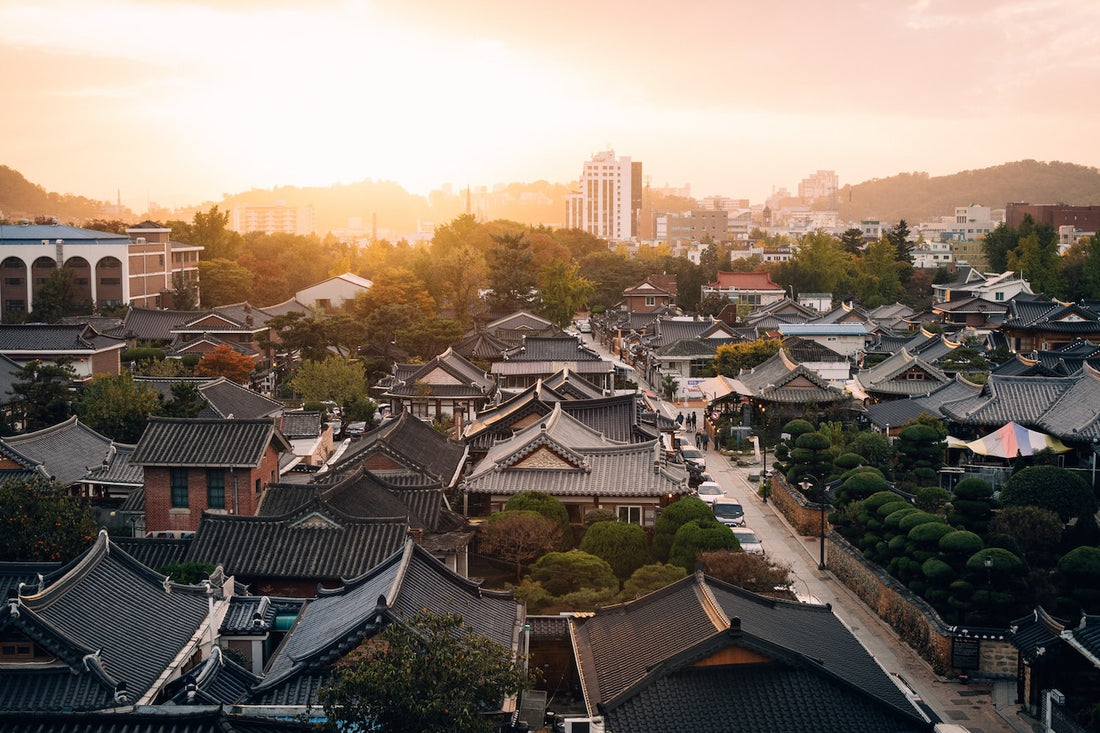How to Say Hello and Goodbye in Korean
Last Updated: • PublishedIf you are somewhat exposed to Korean media, you would have come across the word 안녕 (Annyeong) all the time. Let's find out in how many ways this word can be used as greetings.

Featured article photo: Jeonju, South Korea by rawkkim (Unsplash License)
Let's start off with a small tidbit. The word Annyeong (안녕) is derived from the base verb Annyeonghada (안녕하다), meaning a state of peacefulness, or a state of wellness. So essentially, all greetings that contain the word 안녕 (Annyeong) are all well-wishes of peacefulness and wellness in themselves. Beautiful, isn’t it?
You'd do well to remember that Korean is a language that emphasizes on formality. Knowing how to express yourself in both formal and informal settings is crucial, especially when it comes to greetings because making a good first impression will go a long way!
Annyeonghaseyo
(안녕하세요) - Formal
Annyeonghaseyo (안녕하세요) is probably one of the most common form of greeting that people come across. It is a safe, formal way to say "Hello." Literally, this phrase means "Be well" or "Please be well."
You will hear this often when entering a restaurant, a hotel, or other service establishments in Korea. You can't go wrong in using this greeting when meeting someone for the first time, when greeting your employer, teacher, or anyone who is supposedly older or in a more superior position than you are in an organization.
This greeting is done with a slight bow. A full 90-degree bow isn't necessary; a slight bow when saying this greeting will suffice. Non-Koreans may get a free pass for not bowing, but if you're already saying the greeting, might as well do a little bowing, right?
Annyeonghi gyeseyo
(안녕히 계세요) - Formal
You say Annyeonghi gyeseyo (안녕히 계세요) when you are leaving, but the other person is staying. This phrase literally means "Please stay well."
Annyeonghi kaseyo
(안녕히 가세요) - Formal
Use Annyeonghi kaseyo (안녕히 가세요) when you are staying, and the other person is leaving. The word kaseyo (가세요) means "Please go," and the phrase Annyeonghi kaseyo (안녕히 가세요) means "Please go well."
Annyeong
(안녕) - Informal
Annyeong (안녕) is a casual, informal way of saying "Hello." It is typically used among close friends and not people you have just met. There is no need to bow when you are greeting someone informally, a simple wave will do. Annyeong (안녕) can also be used to say "Goodbye."
Jalgayo / Jalga
(잘가요 / 잘가) - Informal
New Korean learners often use the formal form of saying goodbye in formal Korean, namely Annyeonghi gyeseyo (안녕히 계세요) and Annyeonghi kaseyo (안녕히 가세요), but these are awkward to use in informal settings.
It is more appropriate to use Jalgayo (잘가요) or Jalga (잘가) when saying goodbye as it gives off a more casual vibe. The word Jal (잘) in Korean also means "Well," and so Jalga (잘가) basically means "Go well."
Jalgayo (잘가요) is a slightly more polite form of Jalga (잘가), use it when you want to remain casual but polite.
